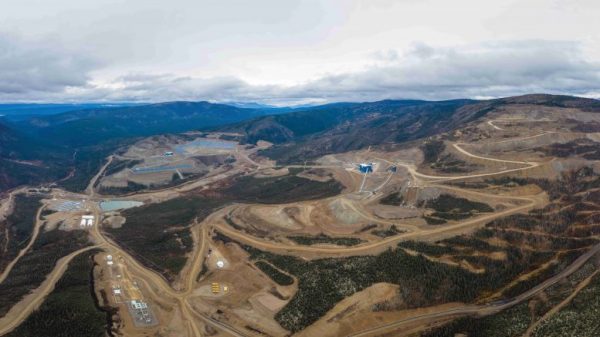
After declaring commercial production at the Eagle mine in Canada’s Yukon Territory earlier this month, Victoria Gold has provided production guidance for the second half of this year – it expects to generate 85,000 oz. to 100,000 oz. of gold in the last two quarters at all-in sustaining costs of $950 to $1,100 per oz.
“Achieving commercial production was a great accomplishment for the entire Victoria team of employees and contractors,” John McConnell, the company’s president and CEO, said in a release.
“Going forward, the team will now focus on optimizing the operation and driving down all-in sustaining costs.”
Proven and probable reserves across Eagle and Olive total 155 million tonnes grading 0.65 g/t gold for a total of 3.3 million oz
According to the company, Victoria’s latest guidance accounts for the uncertainties due to the covid-19 pandemic and incorporates the final ramp up of the operation from the start of commercial production through to full capacity.
The company anticipates that its next two sets of quarterly results will reflect this ramp-up, with the third quarter expected to reflect the higher end of the cost guidance with decreases by the fourth quarter and into 2021.
The Eagle mine reached the commercial production milestone on Jul. 1.
In June, the open pit operation generated 13,828 gold oz., bringing its production total for the first half of the year to 38,896 oz.
Victoria wholly owns the 555-sq.-km Dublin Gulch property in central Yukon, 375 km north of Whitehorse, which hosts the Eagle and Olive gold deposits.
Proven and probable reserves across Eagle and Olive total 155 million tonnes grading 0.65 g/t gold for a total of 3.3 million oz. Cut-off grades for the reserves vary with deposit and material type and range from 0.15 g/t gold to 0.58 g/t gold.
Based on a technical report released last December, the Eagle mine is expected to produce an average of over 210,000 oz. of gold a year at all-in sustaining costs of $774 per oz. over a mine life in excess of 10 years.
(This article first appeared in the Canadian Mining Journal)